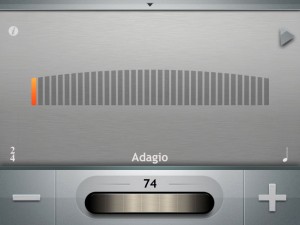Review: Africa Book 1 & Metronome Plus
Ever wish you could visit Africa—today!? Well, here’s your ticket in a volume of ten African songs from across the continent arranged by Neeki Bey. The pieces range in difficulty from approximately level 2a – 3 (as found in major American method series) and are suitable for both actual young people and the young at heart.
Among the selections are examples of pop songs, folk songs, and hymns. Pieces are designed to be learned through listening and imitation. I applaud this aspect, since many of the rhythms and idioms do not easily fit into classical notation—especially not in pieces designed to be enjoyed by less experienced players.
A little improvisation before beginning a new piece from this collection can really help a student who is unfamiliar with African idioms succeed. This week, a young student and I began a lesson with Africa from Aiko and Forrest Kinney’s Pattern Play series and then moved on to Betelehemu.
Accompaniment tracks include two learning plus a performance tempo for each piece. The addition of the slowest track is a plus for students who might have trouble hearing the details and making sense of the rhythm at a medium tempo.
I especially enjoyed Betelehemu, a Nigerian Christmas carol, Pata Pata, made famous by Cat Stevens and Jimmy Buffett in the pop song, It’s Friday Night and I Ain’t Got Nobody, and Jedeli, a traditional Egyptian tune that might help a less experienced player have the tools to understand Bartok’s folk rhythms and style.
Practice tips and background information are provided for each piece. This is true global learning—pun intended. There are unlimited opportunities to tie these musical experiences into other content areas. The next time a young student comes in talking about that project on Africa? A piece from this book will help them kick it up quite a few notches.
 Metronome Plus for iPad / iPhone
Metronome Plus for iPad / iPhone
Finally, a metronome that uses all the volume the Mac OS will allow. When using earphones, you might actually have to lower the volume. On an iPad and iPhone the sound is actually loud enough for most one on one teaching. If you plan to use it in a class or with an ensemble you will need to use speakers.
A sweet digital pendulum is front and center. The bar design of the pendulum (which reminds me of the energy interface in my Prius) is very easy to follow and fosters a fluid feeling of movement between beats unlike flashing light versions.
The layout is neat, clean, and uncomplicated. Tapping the down arrow at the top of the screen opens a window from which you can program accents, subdivisions, meter, and sounds. No more opening and closing a series of windows until you have everything just the way you need it.
You can program accents on any beat and customize subdivisions easily for the task at hand. Sounds include Clave, Woodblock, Digital, and Shaker. The beat may be entered by tapping or using the + – icons. The tempo is shown in both number and Italian tempo designations (Andante 96). Volume is controlled by the buttons on your device.
The newly updated Metronome Plus is available for both iPhone and iPad. More updates are in the works and anyone who purchases this app now will get those for free. I hope one of those updates will include the ability to store presets—especially useful for practicing pieces with many tempo changes.
